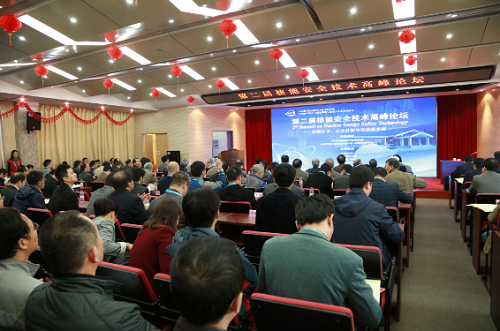2nd Summit on Nuclear Safety Technology was organized by the Institute of Nuclear Safety Technology (INEST), Chinese Academy of Sciences (CAS), on 2nd-4th November 2015 in Hefei, Anhui, China.
The delegations consisting of Ministry of Science and Technology of People’s Republic of China, China Atomic Energy Authority, National Energy Administration, CAS, and more than 100 other domestic and foreign research institutions attended the summit , included more than 20 academicians awarded by CAS, Chinese Academy of Engineering (CAE), Third World Academy of Sciences (TWAS) and with 300 other experts and scholars.
Vice Governor of Anhui Province Mr. YANG Zhenchao and Vice Mayor of Hefei City Mr. WANG Xiang also attended the meeting and communicated with the academicians and experts. Moreover, Vice President of University of Science and Technology of China (USTC) Mr. CHEN Chusheng hosted the opening of the summit and President of Hefei Institutes of Physical Science (CASHIPS) Mr. KUANG Guangli made the welcome speech.
The theme "nuclear safety, public perception and sustainable development" based on the current development status of nuclear energy combined with the perspectives and potential energy policy in the 13th five-year plan of China, was comprehensively discussed.
The public perception is one of the great concerns regarding:
1) The implementation of the national strategy of nuclear energy development (including exporting strategy of nuclear power plants with proprietary intellectual property rights as well as restarting approvals of inland nuclear power site etc.) is a hot issue discussed in the emerging media.
2) A common interpretation that the development of nuclear energy and nuclear energy safety is not only a scientific issue, but also a social issue, involving social, ethical and economic factors.
Hence, for the healthy and sustainable development of the nuclear power, different voices and views should be considered and the public should be more involved along with the government and the industry. As representatives of the public participation, the third party organizations, including the scientists must play an active role in the scientific, sustainable and inclusive development of nuclear energy.
Furthermore, the “fusion” of scientific science and social science is highly recommended in the summit. Social scientists should be invited to join the debates, and nuclear safety R&D should also be strengthened as well as the information exchange and interaction with the media.
In addition, the summit also proposed the "four innovations" of nuclear safety research for advanced nuclear energy system: “Concept Innovation” ensuring the safety goal to be society-based rather than technology-based; “Technology Innovation” implementing the innovative reactor technology for inherent safety rather than only simplifying the complexity of defense; “Methodology Innovation” relying on the theoretical guidance and systematic assessment; “Action Innovation” establishing the "third party" to interact among government, industry and society.
The summit was supported by China Nuclear Energy Association(CNEA), China Nuclear Society(CNS), China Society of Radiation Protection(CSRP)and the China Association for Science and Technology(CAST).

The Summit Snapshot (Imaged by HUO Qianchao)